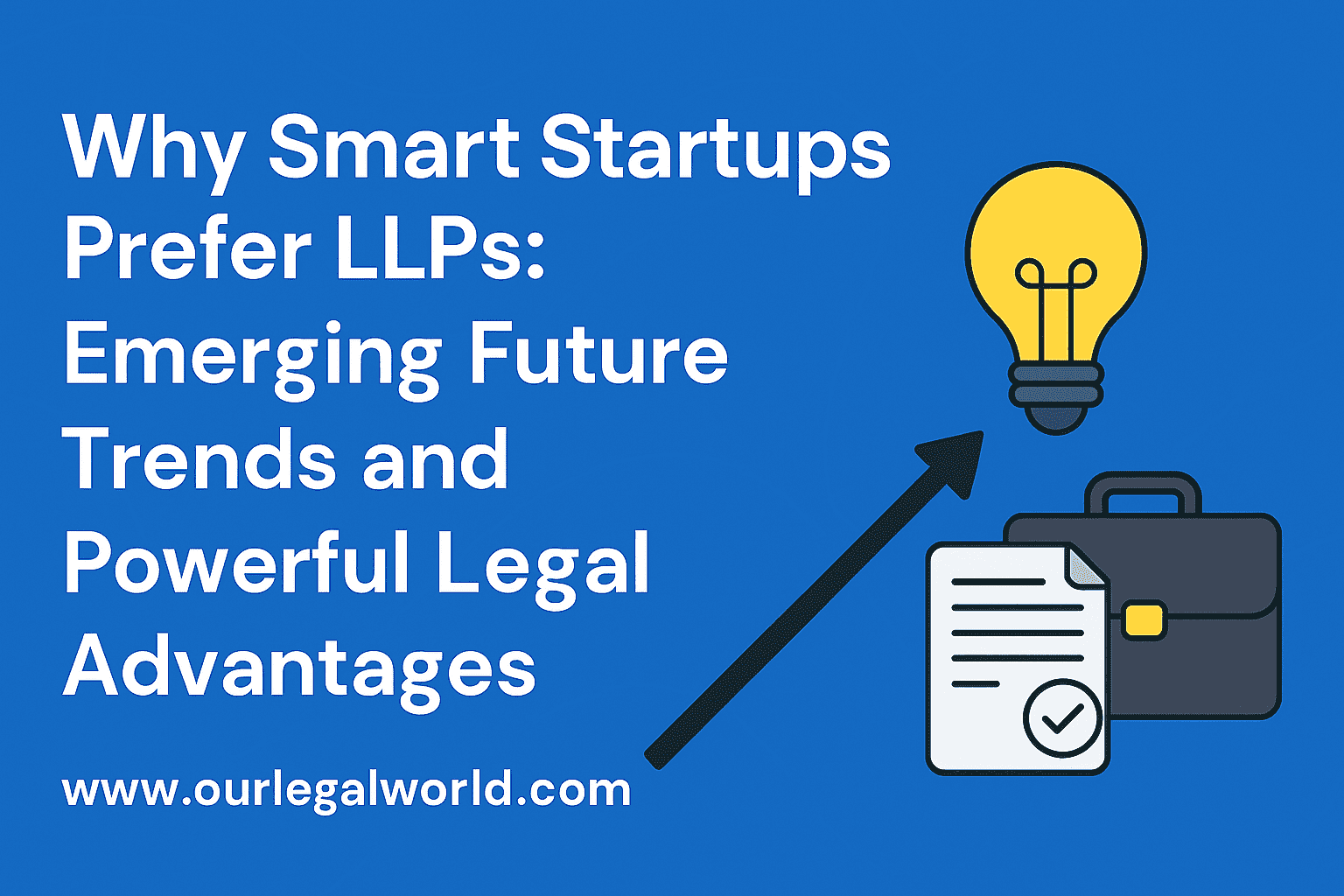POTENTIAL FOR BIAS IN AI POWERED LEGAL TOOLS:- OurLegalWorld
Written By: Aditi Mishra & Akshat Jain {Institute Of Law, Nirma University}
Introduction
Artificial intelligence (AI) has grown in popularity in the legal business, offering a variety of benefits such as enhanced efficiency, accuracy, and cost savings. However, there is a risk of prejudice in AI-powered legal tools, which might have major implications for the justice system.
Bias in AI-powered legal tools can occur for a variety of reasons. The data utilised to train the algorithm is one of the key factors. If the data used is skewed, the algorithm will almost certainly provide skewed results. For example, if the historical legal data used to train an AI-powered legal tool is biased against a certain race or gender, the algorithm may give biased results that perpetuate the current bias.
Another source of prejudice in AI-powered legal tools is how the algorithm is developed. If the algorithm is created with specific assumptions or prejudices, the results will be biased. For example, if an algorithm predicts that people who live in a specific location are more likely to commit a crime, it may produce biased results that disproportionately affect those who live there.
Also Read: CHATGPT: NEW RIDDLE IN THE SPHERE OF IPR
Bias in the usage of AI-powered legal tools can occur due to a lack of diversity in development teams. If the development team is not diverse, biases are more likely to go undiscovered or be perpetuated in the creation of AI-powered legal tools, which can deliver considerable benefits to the legal sector.
It is critical to recognise the possibility of bias in these legal tools. To address these biases, the legal industry will need to work together to guarantee that the data used to train these algorithms is varied and unbiased, and that the development teams are diverse and inclusive.[1]
Types Of Bias In AI Powered Legal Tools
Bias can manifest itself in a variety of ways in AI-powered legal tools. Some examples of the same are as follows:
- Training Data Bias: AI algorithms learn and predict using vast data sets. If the training data is biased, the model will be biased as well. For example, if a criminal justice tool’s training data is biased against specific races or genders, the model will produce incorrect predictions.
- Confirmation Bias: AI algorithms can be programmed to confirm previously held beliefs. For example, if an AI tool is created to forecast the chance of someone reoffending and the developers already believe that particular groups are more likely to reoffend, the model may penalise those groups unfairly.
- Sampling Bias: AI models may be biased if the sample used to train them does not represent the population they are intended to serve. For example, if a tool is trained using data from a single geographic region, it may not perform as well in other places with differing demographics.
- Algorithmic Bias: Algorithms can be biased as well. This can occur if the algorithm is programmed to prioritize particular variables or features over others, or if it is programmed to penalize specific groups more severely.
- User Prejudice: Users of AI-powered legal tools can contribute bias as well. For example, suppose a tool is utilized to make recruiting decisions, and the persons utilizing the tool have unconscious biases against women, and certain groups, then the tool will reflect those biases.[2]
Causes Of Bias In AI Powered Tools
- Bias in training data: Bias in AI models can be created when the data used to train them is biased. If the training data is skewed or incomplete, the final model will make erroneous conclusions. For example, if a tool is trained on a dataset with a higher proportion of instances involving certain sorts of persons or demographics, it may perform badly or incorrectly when applied to cases involving other categories.
- Lack of diversity in the development team: Because AI technologies may reflect the prejudices of their designers, it is critical to have a diverse workforce that represents many perspectives and experiences. If the development team is not diverse, the tool is more likely to contain unconscious prejudices.
- Confounding variables: There may be circumstances in the legal system that impact the outcome of a case but are not directly related to the case itself. For example, the defendant’s socio-economic status or the kind of legal representation they receive might have an impact on the outcome of a case. If these elements are not considered, the AI tool may make erroneous conclusions.
- Feedback loops: AI systems that make decisions based on historical data can create feedback loops that perpetuate existing biases. For example, if a tool is used to decide which job candidates to interview and it is biased against individuals from certain backgrounds, it may perpetuate discrimination and result in even fewer candidates from certain backgrounds being chosen in the end.
- Lack of transparency: In addition, a lack of openness in how AI-powered legal systems generate decisions can contribute to bias. Users may be unable to recognise and correct biases if they do not understand how the technology works or how judgements are made.[3]
Implications Of Bias
Bias in AI-powered legal tools can have serious consequences for the legal system and society at large.
Unfair legal outcomes can occur as a result of bias in AI-powered legal instruments. If the AI algorithms utilised to make legal decisions are biassed against certain demographics or groups, prejudice and injustice might occur.
Existing biases can be reinforced. AI systems can potentially reinforce existing biases in the legal system. If the data used to train the algorithm is biassed, the algorithm will be biassed, reinforcing existing biases in the legal system.
There can be a lack of transparency. Artificial intelligence algorithms employed in legal applications might be sophisticated and difficult to grasp, resulting in a lack of transparency in legal conclusions. This can make it difficult for lawyers, judges, and litigants to understand how decisions are reached and, if necessary, to dispute them.
It can also lead to negative societal consequences. Biased judicial judgements might have a negative societal impact. Biased choices in criminal cases, for example, might lead to over policing of some neighbourhoods, reinforcing stereotypes and harming social cohesiveness.
Biased legal decisions can be challenged in court, which can result in expensive legal battles and appeals. This can put a considerable strain on the court system and cause justice to be delayed for individuals involved in the case.
It is critical to recognise and minimise the potential consequences of bias in AI-powered legal tools. This includes training algorithms using varied and unbiased datasets, maintaining openness in decision-making, and developing ways to dispute and correct biassed judgements.[4]
Mitigating Bias In AI Powered Legal Tools
Artificial intelligence-powered legal tools have the potential to transform the legal profession, but they are also prone to bias. Here are some strategies for reducing prejudice in AI-powered legal tools.
Biases can occur when training data is limited or distorted. To avoid this, make sure the data used to train AI models is diverse and reflective of the populations and scenarios to which it will be applied. This can be accomplished by gathering data from numerous sources, including diverse demographics and geographies.
Data normalisation and feature scaling are two pre-processing approaches that can assist remove bias from data.
Normalisation is the process of scaling data to fit inside a specific range, whereas feature scaling is the process of changing features to have a mean of zero and a standard deviation of one. These strategies serve to ensure that each characteristic, regardless of its original value, is treated equally.
AI models must be updated on a frequent basis to account for changes in the data or the real world. As new information is added, regular updates can assist ensure that the model remains unbiased.
Human supervision is required to ensure that AI-powered legal tools remain objective. Legal practitioners can check the AI-generated product for accuracy and impartiality.
AI-powered legal tools should be clear and explainable, allowing legal practitioners to comprehend how the models reach their results. This will aid in the detection and correction of any biases that may occur.
AI models can be tested for bias using a variety of methodologies, including fairness metrics, confusion matrices, and statistical tests. Bias testing should be performed both before and after the AI model is deployed.
It is possible to eliminate bias in AI-powered legal tools and ensure that they give accurate and fair findings by employing these strategies.[5]
Conclusion
Bias in AI-powered legal instruments is a well-known problem in the field of AI and law. While AI technologies can be extremely valuable in expediting legal processes and enhancing efficiency, they are only as accurate as the data on which they are trained and the algorithms they employ.
The data used to train AI-powered legal tools is a major source of bias. If the data used to train the AI tool is biased, the tool will also be biased. For example, if an AI tool is trained on historical legal cases in which one group is disproportionately favoured over another, the tool may produce biased outcomes in favour of that group.
The algorithms used to analyse the data are another source of bias in AI-powered legal tools. If the algorithms are constructed in such a way that they reinforce existing biases, the tool will also be biased. For example, if an AI tool is programmed to prioritise certain criteria over others, and those factors are biased in themselves, the tool may produce biased outcomes.
It is worth noting that the possibility of prejudice in AI-powered legal tools is not unique to AI. Bias has always existed in the legal system, and artificial intelligence is simply a new instrument that can exacerbate or alleviate that bias.
To reduce the possibility of bias in AI-powered legal tools, it is critical to carefully scrutinise the data used to train the tool, as well as to constantly evaluate and alter the algorithms used to analyse that data. Transparency and accountability are also important, as users of AI-powered legal tools should be able to understand how the tool reached its results and, if required, contest those conclusions.
Overall, while the potential for bias in AI-powered legal tools is a significant problem, it is conceivable to design tools that can help make the legal system fairer and just with careful attention and control.
[1] Manyika J, “What Do We Do about the Biases in Ai?” (Harvard Business ReviewNovember 17, 2022) < https://hbr.org/2019/10/what-do-we-do-about-the-biases-in-ai> accessed April 23, 2023.
[2] Warren, Z. (2022) Finding ‘fairness’ in AI: How to combat bias in the data collection process, Thomson Reuters Institute. Available at: https://www.thomsonreuters.com/en-us/posts/legal/combating-ai-bias/ (Accessed: April 23, 2023).
[3] huston, patrick (no date) The rise of the technically competent lawyer – assets.website-files.com. Available at: https://assets.website-files.com/5cb0b06571c2a70d6460e2bc/5ffd0f57465d783c305ba1e1_The%20rise%20of%20the%20technically%20competent%20lawyer.pdf (Accessed: April 23, 2023).
[4] Silberg, J. and Manyika, J. (2019) Tackling bias in artificial intelligence (and in humans), McKinsey & Company. McKinsey & Company. Available at: https://www.mckinsey.com/featured-insights/artificial-intelligence/tackling-bias-in-artificial-intelligence-and-in-humans (Accessed: April 23, 2023).
[5] McKenna, M. (2019) Machines and trust: How to mitigate AI bias: Toptal®, Toptal Engineering Blog. Toptal. Available at: https://www.toptal.com/artificial-intelligence/mitigating-ai-bias (Accessed: April 26, 2023).









![Call for Paper of RMLNLU Law Review [Volume XVI (2025-26)]](https://www.ourlegalworld.com/wp-content/uploads/2025/07/ORIGINAL-CFP.png)
